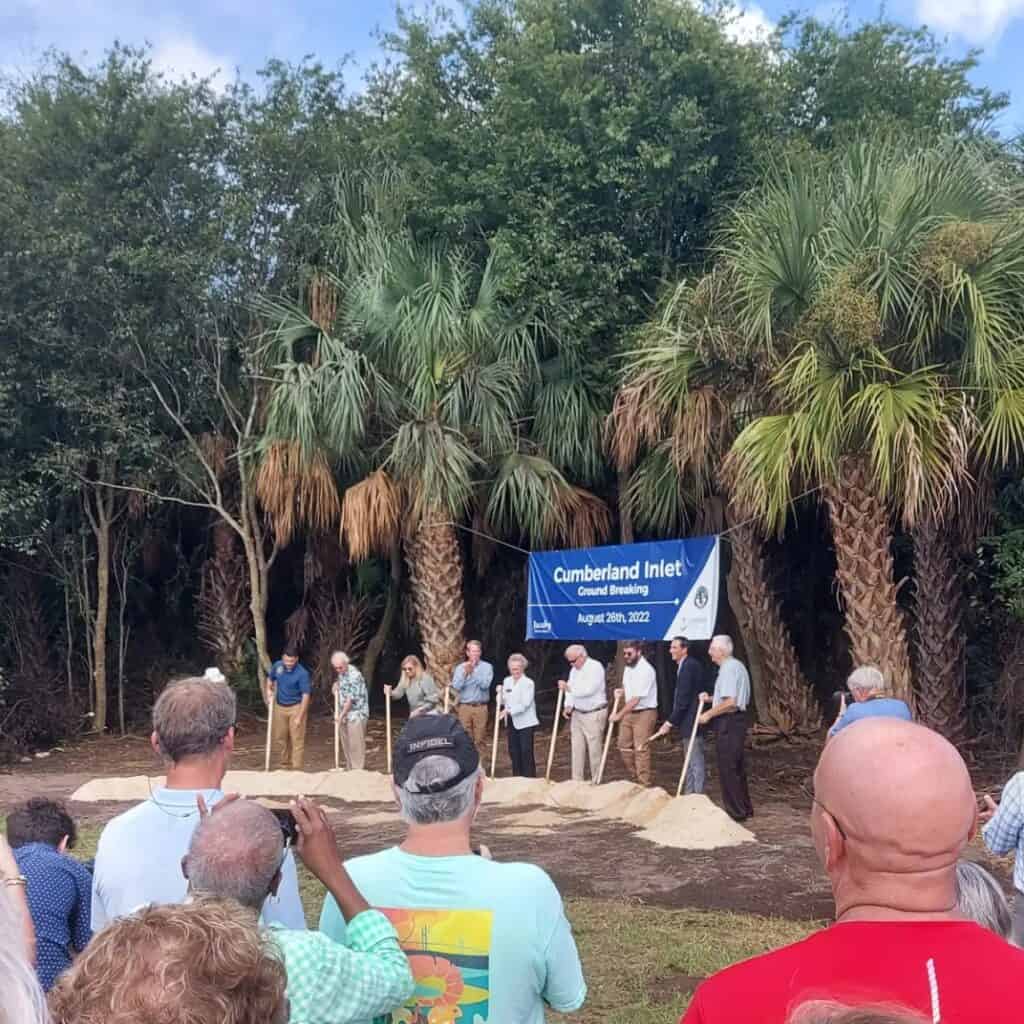Groundbreaking Inspires a Look Back: The Gilman Paper Company

It was hot. It was muggy. The South Georgia sun was blazing. But that didn’t stop hundreds, including Governor Brian Kemp, from attending the August 26th groundbreaking of Cumberland Inlet, a $500 million project encompassing a town center with a boutique hotel and restaurant, an eco-tourism resort, a marina, vacation rentals, and much more.
While Camden County residents anticipate with excitement this new chapter, doubtless many think back to this land’s past as site of the former Gilman Paper Company. Let us explore Gilman’s eventful tenure in St. Marys together.
This saga begins in Manhattan’s Lower East Side, where fourteen-year-old Isaac Gilman immigrated from Russia in the 1880s. His success peddling surplus newspapers for use as wrapping paper cemented his place in the paper industry, allowing him to take over a distressed New England paper company in Fitzdale, Vermont. Isaac was so beloved as an employer – he provided above-average wages, helped with medical bills, and knew every employee’s first name – that the locals changed the village’s name to Gilman in 1921.
In 1939, Isaac’s son Charles, who had taken over the business, opened a pulp mill in St. Marys to supply the Vermont mill, which he then sold in 1947. He also took advantage of this area’s abundant local resources by acquiring extensive timber lands in Florida and Georgia, including the 7,400 acres in Nassau County that would become White Oak Plantation. In St. Marys, the Gilman Paper Company grew into the largest privately-owned paper company in the nation, employing up to 50% of the town’s 4,000 citizens and accounting for 75% of Camden County’s economy. By the 1970s, it produced 900 tons of paper per day.
Upon Charles’ death in 1967, the family drama began. Charles’ son Chris was president, but his older brother Howard was senior officer. Their relationship became strained. Their mother, Sylvia, took Chris’s side in 1979, disinheriting Howard and leaving Chris in sole control of the business.
Howard managed to reinstate a stake in the paper company, but in the middle of this turmoil, in 1982 Chris died of a heart attack at age 51. A new round of litigation followed between Howard and Chris’s widow until she sold her shares to Howard in January of that year, making him head of the Gilman empire.
After two decades of legal battles, the business was weakened, but Howard spent more money on philanthropy than on the paper company. In 1981, he created the Howard Gilman Foundation, giving liberally to organizations devoted to science, education, endangered animals, social justice, and the visual and performing arts. From 1988 to 1997, he spent $300 million on these projects, with half that sum going towards transforming White Oak Plantation into a dance studio for Mikhail Baryshnikov and other noted artists, a conference center, and a Conservation Center which was home to 60 species of endangered and threatened animals. White Oak Plantation played host to U.S. Presidents and celebrities, including Bill Clinton who played golf on Gilman’s private nine-hole course.
Howard Gilman passed away of a heart attack in 1998 at the age of 73 with almost all of his assets, including the paper company, going to the Foundation. Still today it supports three of his most beloved disciplines – dance, music, and theater.
In December 1999, the St. Marys paper mill was purchased by the Mexico-based Durango Paper Company, but in 2002 the Durango owners left town after two industrial accidents at the plant, which resulted in large OSHA fines, and then announced the plant would close in 60 days. Employees were promised severance pay, vacation pay, and sick pay but were left without any compensation. Overall, the plant’s closing cost 900 Camden residents their jobs and possibly affected 2,000 others.
Thus Gilman’s 60-year reign as Camden County’s largest employer ended, but today locals still enjoy many of Howard Gilman’s philanthropic contributions to the area. We will discuss Mr. Gilman’s local patronage in a future post, but tune in next issue for a history of the St. Marys’ Seafood Festival, coming October 1, and the town’s tumultuous relationship with its river!
Want more history on St. Marys? Join our St. Marys Walking Tour!


